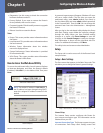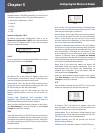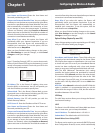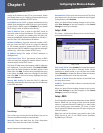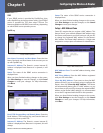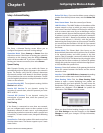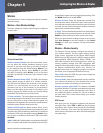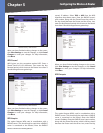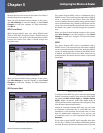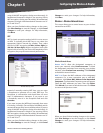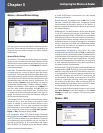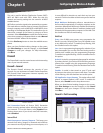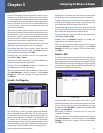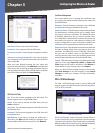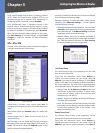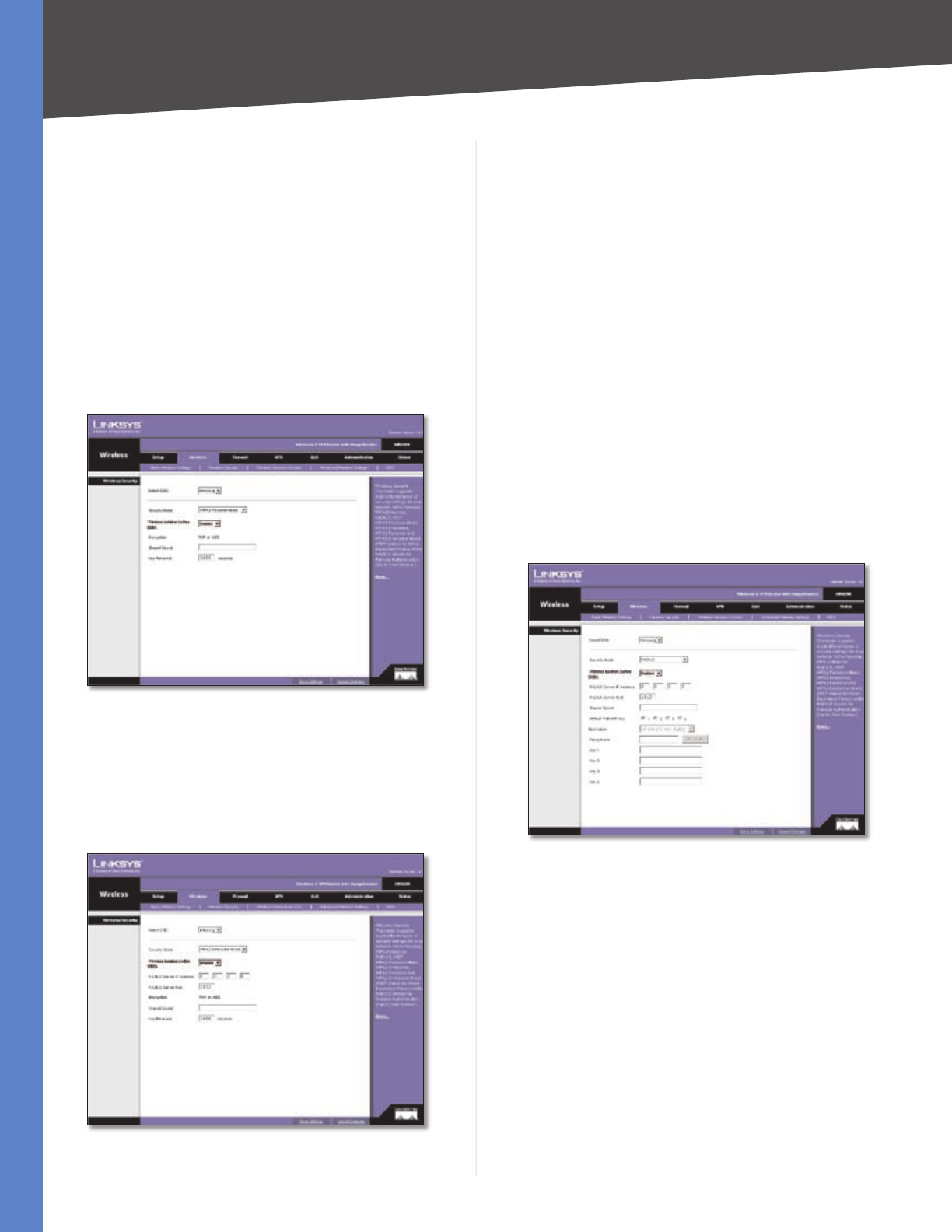
Chapter 5
Configuring the Wireless-G Router
15
Wireless-G VPN Router with RangeBooster
Renewal period, which instructs the Router how often it
should change the encryption keys.
When you have finished making changes to the screen,
click Save Settings to save the changes, or click Cancel
Changes to undo your changes. For help information,
click More.
WPA2 Personal Mixed
WPA2 Personal Mixed gives you either WPA-Personal
(TKIP) or PSK2 (AES) encryption. Enter a Shared Secret of
8-63 characters. Then enter a Key Renewal period, which
instructs the Router how often it should change the
encryption keys.
Wireless Security - WPA2 Personal Mixed
When you have finished making changes to the screen,
click Save Settings to save the changes, or click Cancel
Changes to undo your changes. For help information,
click More.
WPA2 Enterprise Mixed
Wireless Security - WPA2 Enterprise Mixed
This option features WPA2 used in coordination with a
RADIUS server. (This should only be used when a RADIUS
server is connected to the Router.) Enter the RADIUS
server’s IP address and port number, along with the shared
secret (authentication key) shared by the Router and the
server. Last, enter the Key Renewal period, which instructs
the Router how often it should change the encryption
keys.
When you have finished making changes to the screen,
click Save Settings to save the changes, or click Cancel
Changes to undo your changes. For help information,
click More.
RADIUS
This option features WEP used in coordination with a
RADIUS server. (This should only be used when a RADIUS
server is connected to the Router.) First, enter the RADIUS
server’s IP address and port number in the RADIUS Server
IP Address and RADIUS Server Port fields. Enter the key
shared between the Router and the server in the Shared
Secret field.
Wireless Security - RADIUS
To indicate which WEP key to use, select the appropriate
Default Transmit Key number. Then, select the level of WEP
encryption, 64 bits (10 hex digits) or 128 bits (26 hex
digits). Higher encryption levels offer higher levels of
security, but due to the complexity of the encryption, they
may decrease network performance.
Instead of manually entering WEP keys, you can enter
a Passphrase to generate one or more WEP keys. The
Passphrase is case-sensitive and should have no more
than 32 alphanumeric characters. If you want to use
a Passphrase, enter it in the Passphrase field and click
Generate.
If you want to enter the WEP key(s) manually, then enter
it in the Key 1-4 field(s). (Do not leave a field blank, and do
not enter all zeroes; they are not valid key values.) If you are



